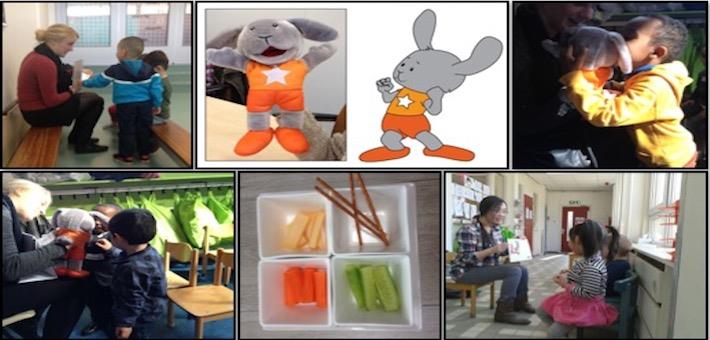
Play With Your Veggies! Adults Can Use Picture Books And Hand Puppets to Improve Toddlers’ Diet
According to a study in Appetite, adults can improve toddlers’ diets when they read vegetable-promoting picture books in an interactive way. Asking toddlers questions about the story while reading the vegetable promoting picture book enhances their consumption of the vegetable. The impact of picture books is even stronger when the reader uses a hand puppet resembling the main character.
Take aways
- As found in previous studies, vegetable-promoting picture books stimulate young children’s eating of the vegetable.
- Asking toddlers questions about the story during reading (interactive reading) enhances the impact of these picture books.
- How does it work? The toddler imitates the poses of the book character, including eating of the vegetable.
- This works even better when the adult uses a hand puppet resembling the book character.
- Developers of educational health programs for young children could integrate interactive health-promoting picture books and hand puppets into their programs.
Study information
The question?
Does the effect of carrot-promoting picture books on toddlers’ consumption differ for reading style and when using a hand puppet during reading? And do the toddlers’ involvement and character imitation play a role?
Who?
163 2- to 3-year-olds (52% were boys); mostly from a low socioeconomic status and various cultural backgrounds
Where?
The Netherlands
How?
The researchers read a carrot-promoting picture book to the toddlers in either a passive (only listening to the story) or an interactive (also answering questions about the story) reading style. Both types of reading styles were either performed with a hand puppet resembling the main character in the picture book or without a hand puppet. More information about the book.
The researchers read to the toddlers in small groups, every day during four days. After the last reading session children could eat from four bowls containing two healthy snacks (carrots and cucumbers) and two unhealthy snacks (cheese and salted sticks).
Facts and findings
- Toddlers in the interactive reading groups ate more carrots (promoted vegetable) than those in the passive reading groups.
- Toddlers in the interactive reading groups imitated the character poses more often than those in the passive groups. In turn, those toddlers consumed more carrots than the other children. This means that imitation of the character is an important explanation for the effect of interactive reading on the amount of carrots toddlers ate.
- The hand puppet even strengthened the effect of interactive reading on toddlers' carrot consumption, because toddlers imitated the character poses more often when the hand puppet was used.